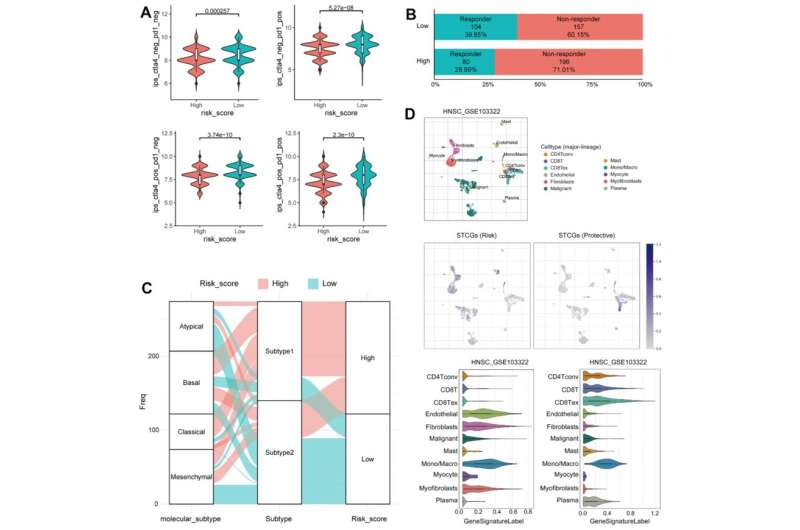This article has been reviewed according to Science X's editorial process and policies. Editors have highlighted the following attributes while ensuring the content's credibility:
fact-checked
proofread
Prognostic significance of senescence-related tumor microenvironment genes in head and neck squamous cell carcinoma

A new research paper titled "Prognostic significance of senescence-related tumor microenvironment genes in head and neck squamous cell carcinoma" has been published in Aging.
The impact of the senescence-related microenvironment on cancer prognosis and therapeutic response remains poorly understood. In this new study, researchers Young Chan Lee, Yonghyun Nam, Minjeong Kim, Su Il Kim, Jung-Woo Lee, Young-Gyu Eun, and Dokyoon Kim from Kyung Hee University, Kyung Hee University Hospital at Gangdong, and the University of Pennsylvania investigated the prognostic significance of senescence-related tumor microenvironment genes (PSTGs) and their potential implications for immunotherapy response.
Using the Cancer Genome Atlas- head and neck squamous cell carcinoma (HNSC) data, the researchers identified two subtypes based on the expression of PSTGs, acquired from tumor-associated senescence genes, tumor microenvironment (TME)-related genes, and immune-related genes, using consensus clustering. Using the LASSO, they constructed a risk model consisting of senescence-related TME core genes (STCGs). The two subtypes exhibited significant differences in prognosis, genetic alterations, methylation patterns, and enriched pathways, and immune infiltration.
"Our risk model stratified patients into high-risk and low-risk groups and validated in independent cohorts," the researchers explain.
The high-risk group showed poorer prognosis and immune inactivation, suggesting reduced responsiveness to immunotherapy. Additionally, the team observed a significant enrichment of STCGs in stromal cells using single-cell RNA transcriptome data. Their findings highlight the importance of the senescence-related TME in HNSC prognosis and response to immunotherapy.
"This study contributes to a deeper understanding of the complex interplay between senescence and the TME, with potential implications for precision medicine and personalized treatment approaches in HNSC," the researchers write in summary.
More information: Young Chan Lee et al, Prognostic significance of senescence related tumor microenvironment genes in head and neck squamous cell carcinoma, Aging (2023). DOI: 10.18632/aging.205346





















